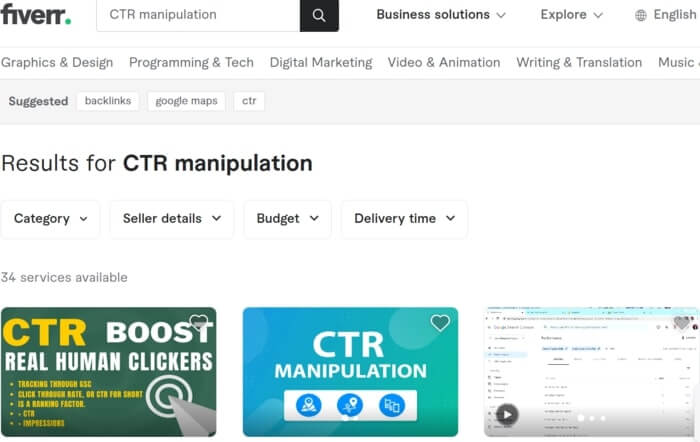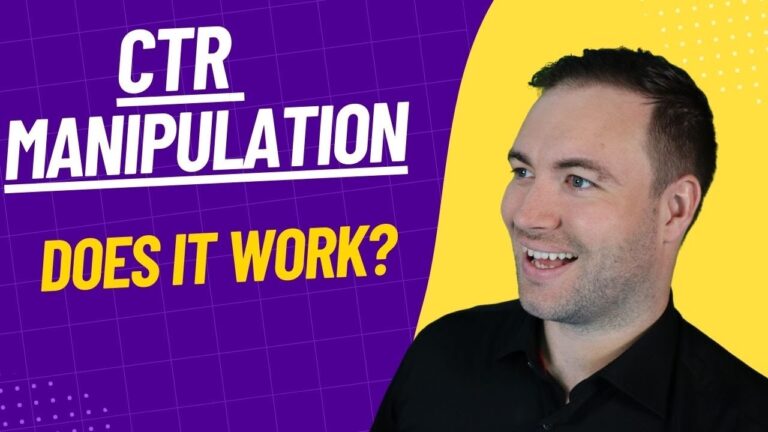Transform Your Click-Through Rates with Proven CTR Manipulation Tactics
Transform Your Click-Through Rates with Proven CTR Manipulation Tactics
Blog Article
Maximizing Organic Click-Through Rates With CTR Control
The optimization of organic click-through prices (CTR) is a nuanced endeavor that pivots on understanding both customer psychology and efficient material presentation. The landscape is raging with mistaken beliefs and oversimplifications regarding what really drives CTR.
Understanding Click-Through Rates
Recognizing click-through prices (CTR) is necessary for evaluating the efficiency of online advertising and marketing strategies. CTR gauges the portion of individuals that click on a particular link or promotion contrasted to the total variety of customers who see it. A higher CTR indicates that the content is engaging and relevant to the target audience, while a lower CTR may indicate a requirement for optimization.
To determine CTR, divide the variety of clicks by the number of impressions and multiply by 100. As an example, if an advertisement receives 300 clicks out of 10,000 impressions, the CTR would be 3%. This metric is crucial for analyzing various aspects of electronic advertising, consisting of seo (SEO), email projects, and social media sites advertising and marketing.
Furthermore, assessing CTR aids marketing professionals determine which approaches generate the most effective outcomes and which require refinement. By concentrating on improving CTR, companies can improve their content's exposure and efficacy, leading to enhanced web traffic and prospective conversions. Recognizing the subtleties of CTR is foundational for any kind of marketing expert intending to maximize their on the internet visibility and take full advantage of return on investment (ROI)

The Psychology of Individual Actions
User behavior is significantly affected by mental elements that determine exactly how people engage with on-line content. Understanding these factors is essential for maximizing click-through rates (CTR) in natural search results page. Cognitive biases, such as the anchoring impact, play a crucial duty in shaping individuals' assumptions. Their preliminary impressions can heavily influence their succeeding judgments about relevance and integrity. when users encounter info.
Emotional actions additionally substantially impact user actions. Content that resonates mentally can activate a feeling of seriousness or interest, prompting individuals to click. Furthermore, social evidence-- such as individual evaluations or rankings-- can improve depend on and motivate engagement, as people typically aim to the actions of others to inform their very own choices.
In addition, the concept of deficiency can drive clicks - GMB CTR Manipulation. Limited-time deals or special web content develop a fear of missing out on out (FOMO), engaging users to act rapidly. Comprehending these emotional chauffeurs allows marketing experts to produce more engaging content that resonates with their target market
Reliable CTR Manipulation Methods
Leveraging mental understandings can considerably enhance click-through prices (CTR) through targeted control techniques. Among one of the most reliable methods is the usage of engaging headings that stimulate inquisitiveness or necessity. Phrasing titles as questions or integrating numbers can draw in more interest, motivating individuals to click.
Another technique involves maximizing meta summaries to develop a feeling of relevance and immediacy. By clearly outlining the advantages or solutions provided in the material, you can involve possible viewers and convince them to click. Additionally, making use of power words-- such as "special," "proven," or "complimentary"-- can boost the allure of your web content.
Visual elements also play a crucial duty. Including attractive pictures or thumbnails can attract customers in and enhance CTR. A/B screening various visuals can aid recognize which images resonate finest with your audience.
Lastly, making certain that your content assures deliverable worth brings about higher CTR. When users regard that clicking will certainly provide them with purposeful understandings or options, they are more probable to engage. By employing these techniques attentively, marketing experts can efficiently manipulate CTR to their advantage while preserving honest criteria.
Common Misconceptions Regarding CTR
Numerous false impressions surround click-through prices (CTR) that can lead online marketers to make misdirected choices. One widespread myth is that a higher CTR always converts to better efficiency. While a high CTR recommends that more customers are clicking, it does not guarantee sales or conversions. Eventually, the efficiency of traffic depends upon the high quality of the landing web page and the relevance of the material.
Another usual idea is that CTR is an isolated metric. Actually, CTR should be assessed along with various other performance indications, such as bounce price and conversion price, to gain an alternative sight of campaign success.
Furthermore, some online marketers presume that maximizing for home CTR alone suffices. However, concentrating solely on CTR can result in clickbait techniques that may attract clicks however stop working to engage users meaningfully. This strategy can damage brand credibility and cause reduced retention rates
Last but not least, there is a notion that CTR techniques are generally reliable. The truth is that optimal CTR strategies can vary significantly throughout markets and target market, demanding tailored techniques for various market sections. Comprehending these myths is critical for creating efficient CTR approaches that align with overarching marketing objectives.
Measuring CTR Success
Although high click-through prices (CTR) can indicate successful interaction with web content, gauging their real success calls for a thorough evaluation of numerous factors. It is important to recognize the context in which the CTR is attained. A high CTR on a deceptive title might not equate to meaningful engagement or conversions, ultimately reflecting inadequately on the brand's integrity.
Second, evaluating the resource of web traffic is crucial. Organic traffic from search engines can represent a robust content discover here approach, while clicks from pointless resources might show a lack of targeting. Additionally, measuring the succeeding customer habits is important; assessing metrics such as bounce price, time invested in web page, and conversion rates can give much deeper insights right into the high quality of the interaction launched by the CTR.

Conclusion

The optimization of natural click-through prices (CTR) is a nuanced endeavor that pivots on recognizing both customer psychology and reliable content presentation. CTR gauges the portion of individuals who click on a specific link or ad compared to the complete number of customers that see it. A higher CTR suggests that the web content is engaging and relevant to the target audience, while a lower CTR may indicate a need for optimization.
Focusing solely on CTR can lead to clickbait tactics that might draw in clicks however fall short to involve customers meaningfully. Additionally, gauging the subsequent customer behavior is important; examining metrics such as bounce rate, time invested on page, and conversion prices can give much deeper understandings right into the top quality of the interaction started by the CTR.
Report this page